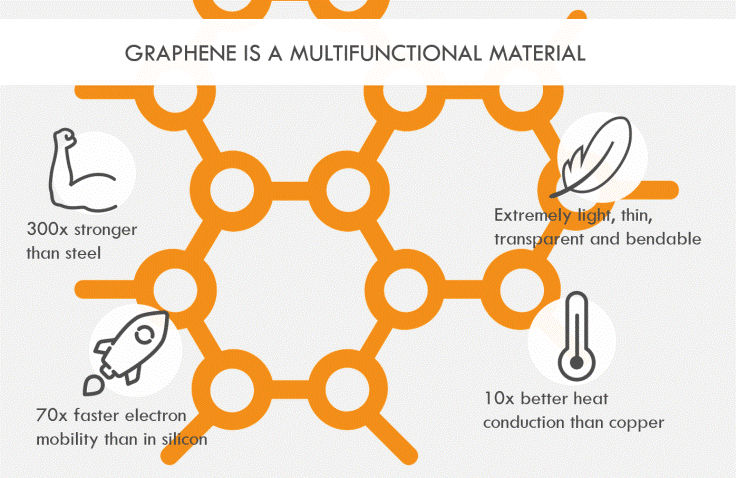Graphene, discovered in 2004 by peeling apart layers of graphite, is an extremely thin, ultra-lightweight material that is over 300 times stronger than steel. Although it is mostly seen as futuristic and expensive to produce, the University of Manchester has done groundbreaking research on graphene engineering and predicts the development of the material for the commercial market is on a tipping point.
For instance, Huawei developed graphene-assisted heat-resistant Li-ion batteries that last twice as long as ordinary Li-ion batteries, and BGT Materials is producing energy-efficient graphene LED lightning. Graphene has even found its way into fashion with the development of smart and abrasion-resistant textiles.
Besides commercial purposes, graphene also has broader applications: graphene oxide can clean up radioactive waste and graphene membranes provide a revolutionary way of desalination. History shows the worldwide impact of new materials. Steel, for instance, changed the world allowing the construction of higher buildings, stronger bridges and railroads. More promising than steel, graphene may contribute to a more sustainable world with long-lasting products, less waste and enough drinking water worldwide.

